Sponsored Content
The murders of two Black men — the killing of 14-year-old Emmett Till in 1955 and the assassination of civil rights leader Medgar Evers in 1963 — rocked the country and made Mississippi ground zero of the Civil Rights Movement. Their deaths, and those of many others — Black and white — would fuel the nationwide push for equality and justice.
The Mississippi Civil Rights Museum, the only state-funded civil rights museum in the U.S., opened in December 2017 and it is a Smithsonian affiliate. Small histories recount the work of the many ordinary citizens who took a stand at a time when to do so often put them and their families in harm’s way. Their efforts chipped away at unfairness and inequality and convinced a nation and its leaders that “separate but equal” wasn’t, and that everyone should have the right to vote.
Tours of Mississippi’s Civil Rights sites are likely to leave travelers feeling like a college student who studied Mississippi’s civil rights movement through a program at Tougaloo College. The stories of individual efforts — from those who cooked fish at fundraising fish fries to those who housed and fed civil rights organizers — resonated. It gives travelers the chance to learn more about the real, everyday people. As you tour the state’s civil rights sites, you’ll likely feel the same.
Jackson
Jackson is a great place to start a Civil Rights tour. Given its significance as the state’s capital and its largest city, it’s no surprise to find Civil Rights sites along its streets. And, because Jackson is a diverse city, it’s easy to meet locals who can share their stories and local history.
With more than 2,000 hotel rooms and plenty of good, local restaurants, Jackson makes sense as a tour hub. Most civil rights sites are no more than a couple of hours away.

Mississippi Civil Rights Museum
Make this much-admired museum your first stop. The Mississippi Civil Rights Museum is applauded for its accurate telling of Black life in Mississippi, from slavery to Civil Rights. Eight exhibit halls follow the downs and ups of history: the horrors of slavery, the hope of Emancipation, the withering effects of Jim Crow, the power of the Civil Rights Movement, the terror of the white supremacy movement. Its final exhibit, Where Do We Go From Here?, invites visitors to consider how racial bias and injustice affect their communities.
Two for one: The museum and the connected Museum of Mississippi History are known as the Two Mississippi Museums. One admission price covers both. Groups that schedule their visit two weeks in advance can sometimes get a more in-depth introduction to the museums. Thanks to a grant, admission is free for Mississippi-based religious travel groups of 10 or more.
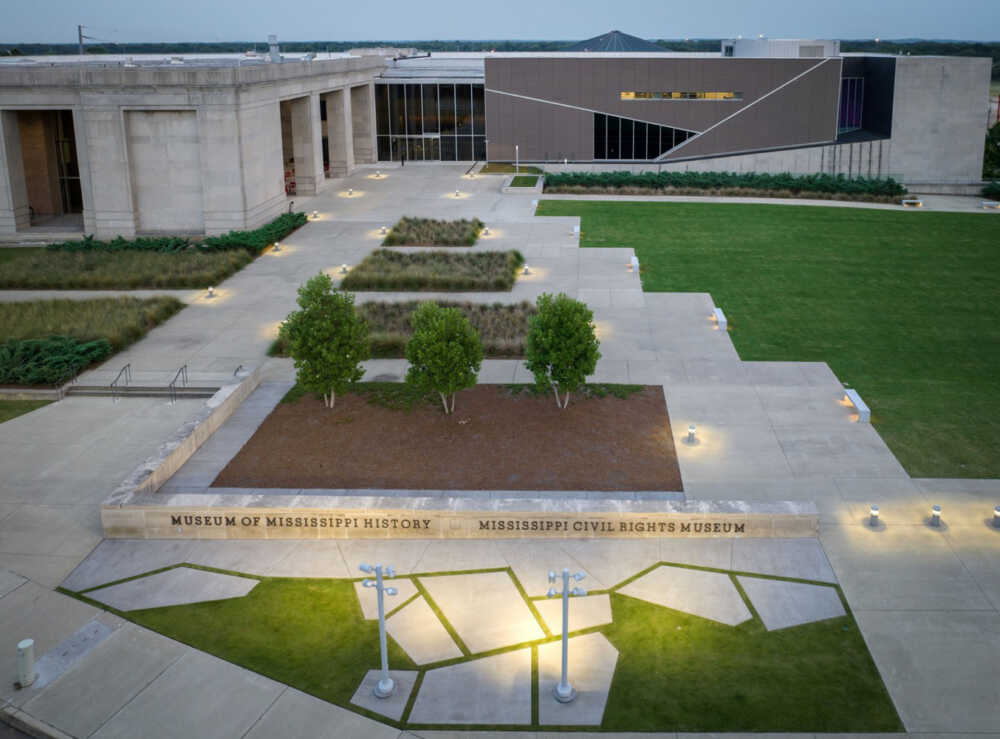
Fuel stop: Nick Wallace, a Black Mississippian and award-winning chef known for his twists on soul food and Southern eats, is the mastermind of the museums’ Nissan Café by Nick Wallace. Start a meal with Mississippi gumbo packed with okra, black eyed peas, Delta brown rice, collards and turkey, and end it with a peach cobbler cinnamon roll. In between, sample shrimp and grits or a Southern-style Ramen bowl with pork belly.
Medgar Evers Home National Monument
If ever a small place had a huge impact, a modest, ranch-style home, where Medgar Evers was gunned down in 1963 as he carried a box of Jim Crow Must Go tee shirts toward the door late one night on his return from work as the NAACP’s field secretary. He was the first major leader of the Civil Rights Movement to be killed; his death was the impetus for the passage of the Civil Rights Act of 1964.
Visitors see a home that looks much as it did when the Evers and their three children lived there: the dining room, where Medgar and Myrlie and other foot soldiers for civil rights planned protests, sit-ins and boycotts; the phone, which often stung Myrlie’s ears as callers shouted racial epithets. The site is relatively new to National Park Service management, so there is no visitor center or public restrooms. Its backyard, Myrlie’s Garden, has picnic tables. The home’s exterior and garden are open from sunrise to sunset; group tours can be arranged through the park service.

Tougaloo College
This historically black independent liberal arts college, founded in 1869, has much to offer. Tougaloo College’s 500-acre campus on Jackson’s edge was once a plantation, so it’s shaded by large trees. See the Tougaloo Art Collections, open to the public. Created in 1963, it was one of the first modern art collections in Mississippi, aimed at using art to promote progress. See the carefully restored Woodworth Chapel, built in 1901, where Sunday services are open to the public, and tours can sometimes be arranged.
Well before the civil rights movement began, Tougaloo emphasized social justice and equality. During the civil rights era, it stepped into an essential role, as it invited civil rights leaders, Freedom Riders and others involved in the movement to take refuge on the campus. Tougaloo students held sit-ins at lunch counters, libraries and other segregated public places and were arrested and beaten for their nonviolent protests. And Tougaloo remains committed to equality and justice. It partners with major universities on many projects, including a program to educate students about civil rights and a study of the cardiovascular health of African Americans.
Smith Robertson Museum and Cultural Center
Housed in what was once the first public school for African American children in Jackson, this museum is small but mighty with exhibits on the history of slavery, the Great Migration and civil rights. Among the experiences it offers is a walk through a replica of the cramped hold of a slave ship.
Fuel stops: Like many cities after Reconstruction, Jackson once had a thriving Black business district, where black-owned businesses thrived and Black professionals set up shop. Farish Street became known as the Black Mecca of Mississippi, and it thrived until the 1960s, when segregation ended and people and businesses moved to the suburbs. Jackson hopes to revive Farish Street, but it will take time. In the meantime, a restaurant that bustled in the Civil Rights era continues to serve diners today. Groups can lunch at Big Apple Inn, now run by the fourth generation of the founding family and known for its pig’s ear sandwiches, tamales and smoked sausages. Medgar Evers was a regular (His office was upstairs); he and other civil rights leaders often met over lunch. A block away, Johnny T’s Bistro and Blues marries music with Blue Plate specials, catfish platters, Gulf redfish and shrimp.
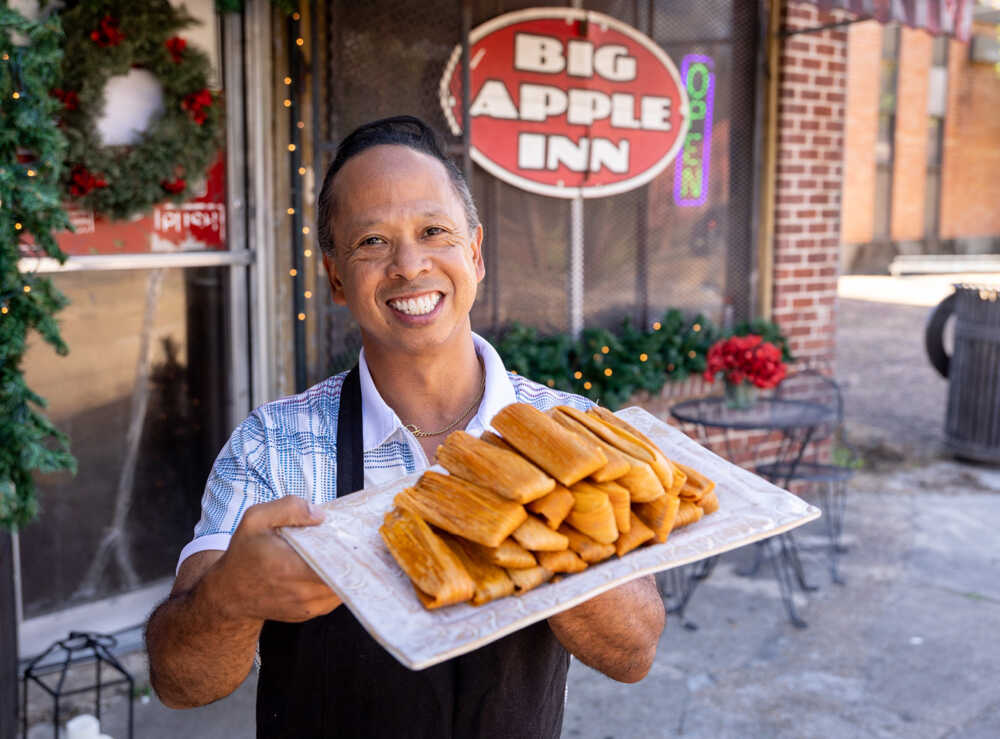
Other fuel stops: Jackson has plenty of local restaurants, many owned and operated by Black entrepreneurs. Top of the list is Bully’s, dishing up soul food for more than 40 years — everything from ham hocks and turkey necks to okra and cornbread. Many staff are family members, and they specialize in making everyone feel at home. The James Beard Foundation named Bully’s one of America’s Classics in 2016. For a heavy-duty hamburger, head to Stamps Super Burgers for a Super Double Burger, two 11-ounce patties stacked high with the works. And, if the tour hasn’t already experienced one of Mississippi’s best-kept culinary secrets — amazing gas station eats — pull into Jefferson’s Grill, where people fill up on barbecue.
Canton

Canton Freedom House Civil Rights Museum
The Canton Freedom House, 40 minutes north of Jackson, was where many civil rights leaders, including Dr. King and James Meredith, found refuge and organized protests starting in 1963. As the headquarters for the Congress of Racial Equality, it was a frequent target of white supremacists. A brave Black couple who owned the house and ran the grocery store next door rented the house to CORE. Today, the modest frame house is a civil rights museum with exhibits of photographs, articles and other memorabilia. Groups can make appointments for guided tours.
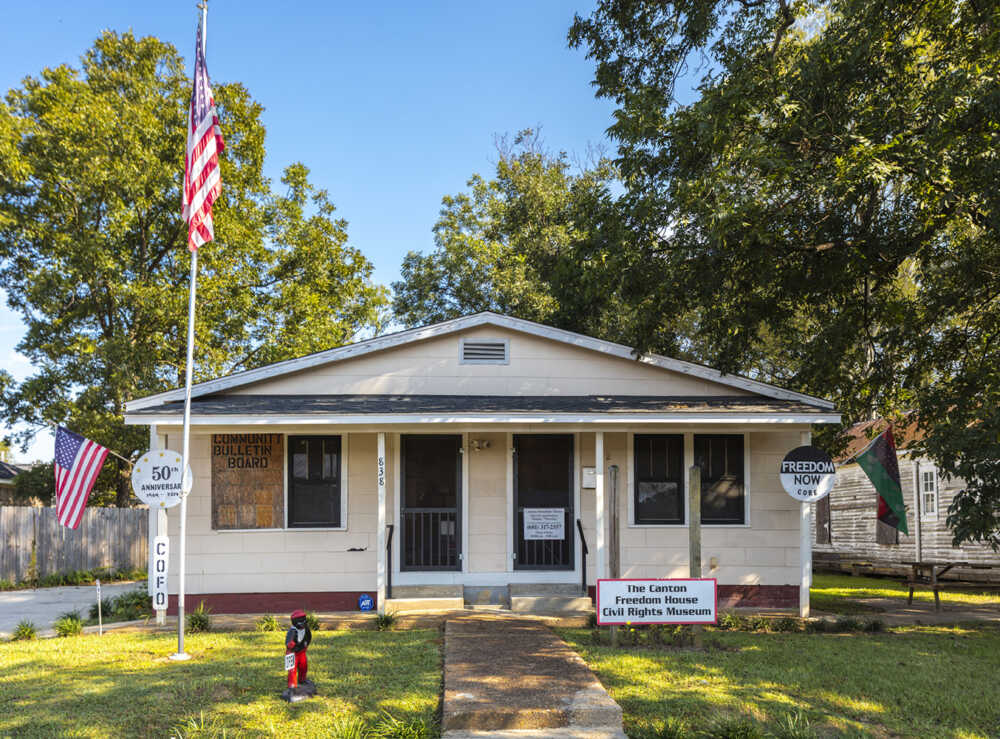
Hattiesburg
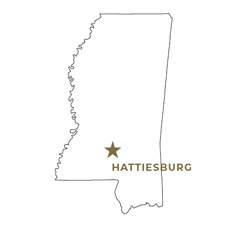
Sixth Street Museum District
In Hattiesburg, an hour and a half south of Jackson, the Sixth Street Museum District has created a Green-Book Tour that spotlights five businesses included in the Negro Motorist Green-Book, the essential travel guide for Blacks, first published in the mid-1930s. Each of the five sites is noted with a Green-Book marker; audio histories of each site are accessible by telephone. The Sixth Street Museum District is a collection of museums and historical buildings located in a neighborhood that was a hub for African American business and social life. The district includes the African American Military History Museum. The Historic Eureka School and the Smith Drug Company.
Ruleville
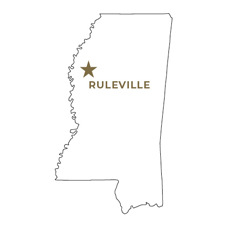
Fannie Lou Hamer Statue
Fannie Lou Hamer’s bronze statue in a park in Ruleville two hours north of Jackson depicts the civil rights leader as she was in life, speaking out, microphone in hand. The 20th child of sharecroppers, she was shot at, beaten, forced from her home and arrested because she fought for voting rights and integration. A gifted speaker, she delivered stunning statements, long remembered, like “Nobody’s free until everybody’s free.”
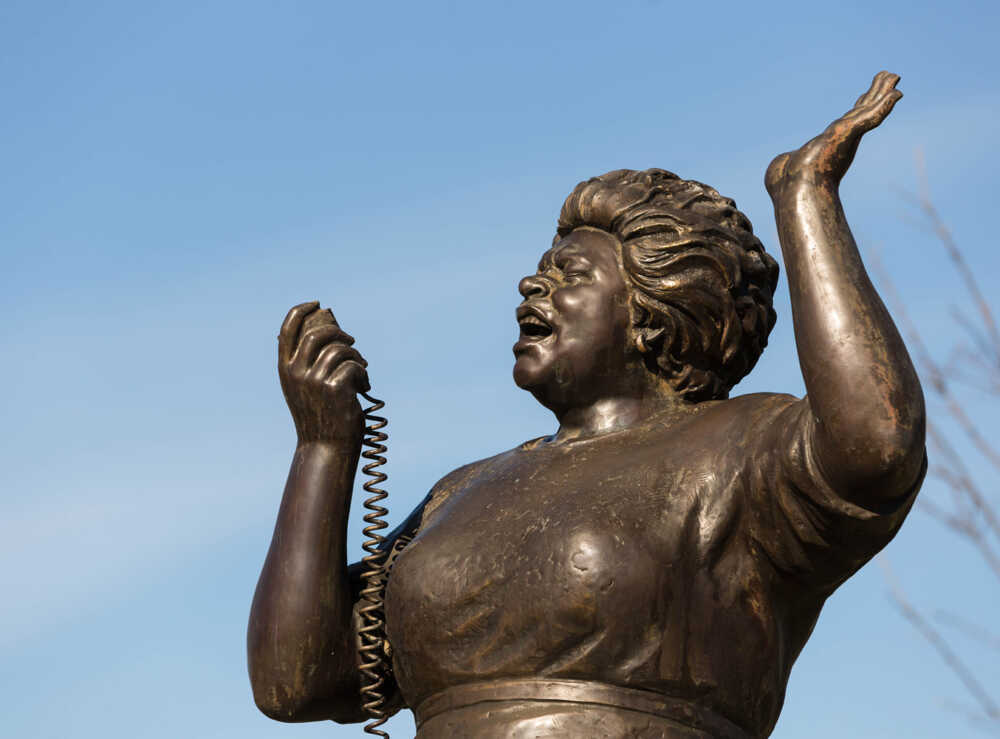
Fuel Stop: After a visit to Ruleville, try Cleveland, 15 minutes west. It has plenty of options, including Country Platter Too, a reboot of a longtime favorite. Soul food is the focus with staples like fried catfish, collard greens and pinto beans. It’s in a building that once housed Lily’s Cafe, where dozens of Civil Rights movers and shakers dined. The Blue Levee serves meat and three specials during the day and blues at night. Another spot that’s totally local, Airport Grocery, cooks up hot tamales, ribs, and burgers. Musicians sing the blues at 122 Hang Suite, known for its fried fish, chicken and waffles and shrimp and grits.
Sumner

Tallahatchie County Courthouse and Emmett Till Interpretive Center
A little over two hours north of Jackson, groups can schedule guided tours of the Tallahatchie Courthouse, a flashpoint of the Civil Rights Movement that’s now a museum. Some 400 people crowded into the courtroom as Roy Bryant and J.W. Milam went on trial in 1955 for the brutal murder of 14-year-old Emmett Till. Across the street, the Emmett Till Interpretive Center focuses on the tragedy of Emmett Till to “foster community healing and understanding to create a more equitable future.”
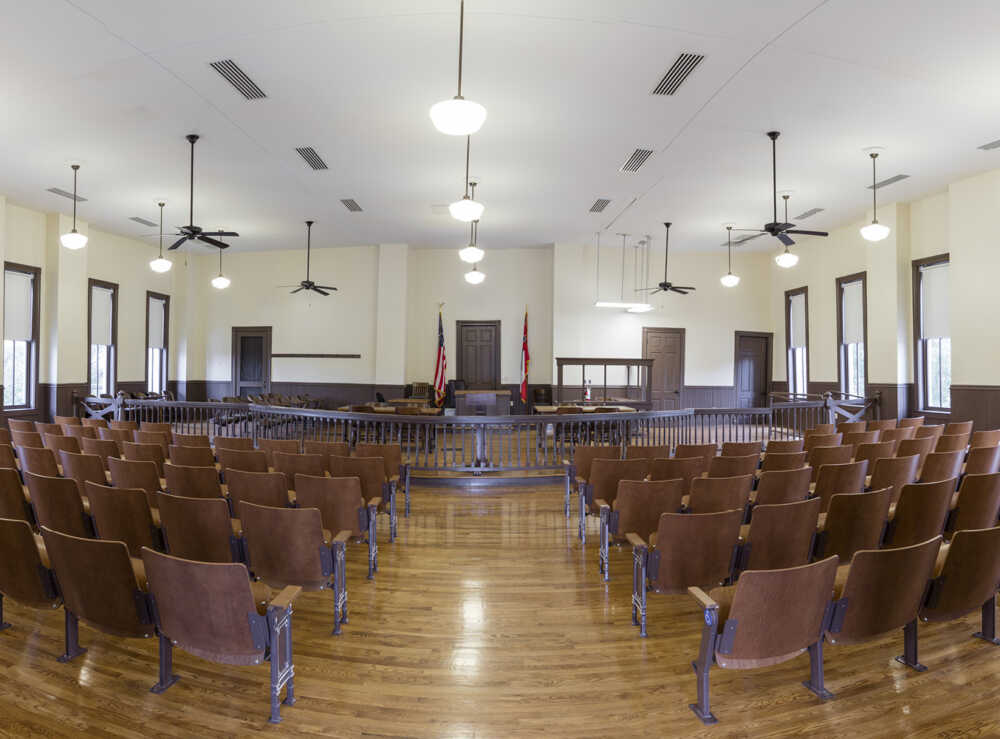
Money

Bryant’s Grocery and Meat Market
All that remains of Roy and Carolyn Bryant’s store at this crossroads 30 minutes south of Sumner is a crumpled pile of clapboard, swallowed by vines. Just as the store collapsed upon itself, so did the Bryants’ lives after Roy Bryant and J.W. Milam, who were acquitted of Emmett Till’s murder, sold the story of how they had killed him to Life magazine. The community reacted. Townspeople, Black and white, stopped shopping at the store and the business ultimately failed.
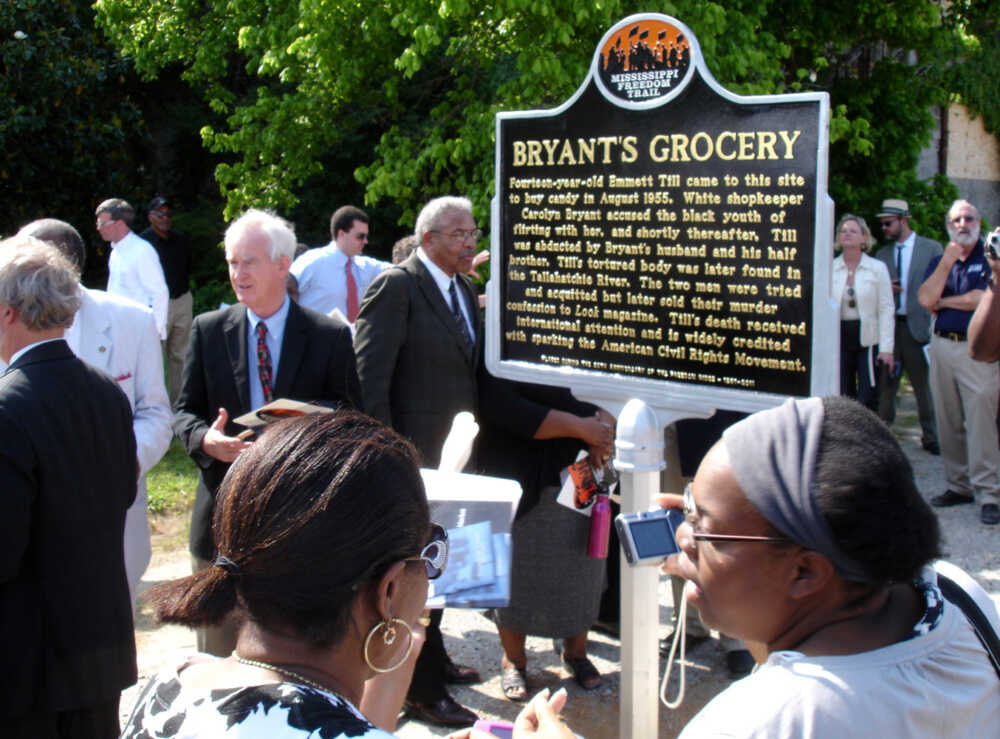
Glendora

Emmett Till Historic Intrepid Center
Exhibits at this small museum two hours north of Jackson cover Emmett Till’s life and death and the Civil Rights Movement in Glendora. It is housed in a building that is tied to Till’s murder. It is believed that the killers used a fan from the cotton gin in the building to weigh down Till’s body before they threw it in the Tallahatchie River.
Philadelphia
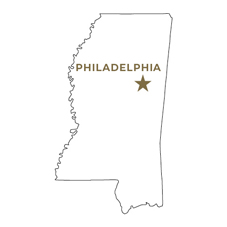
Neshoba County Historic Sites
The Ku Klux Klan rampage in June 1963 that ended with the murders of Civil Rights workers Michael Schwerner, Andrew Goodman and James Chaney is recounted at several sites in and around Philadelphia, an hour and a half northeast of Jackson. There’s the site of Mount Zion Methodist Church, burned by the Klan members who thought Schwerner was there, the Neshoba County Jail, where the three men were held and the courthouse, where Edgar Ray Killen, who instigated the murders, was convicted in 2005.
Oxford

Lyceum ““ The Circle Historic District, University of Mississippi
In the historic heart of the Ole Miss campus, the statue of James Meredith, striding toward a portal inscribed with the word Courage, remembers Meredith’s courageous stand against segregation. A military veteran, he was the first African American to enroll at the university when he entered in 1962 after a federal court ordered the university to admit him. The campus erupted in violence, escalating to the point that President Kennedy ordered federal troops to restore order. Oxford is about two and a half hours from Jackson.
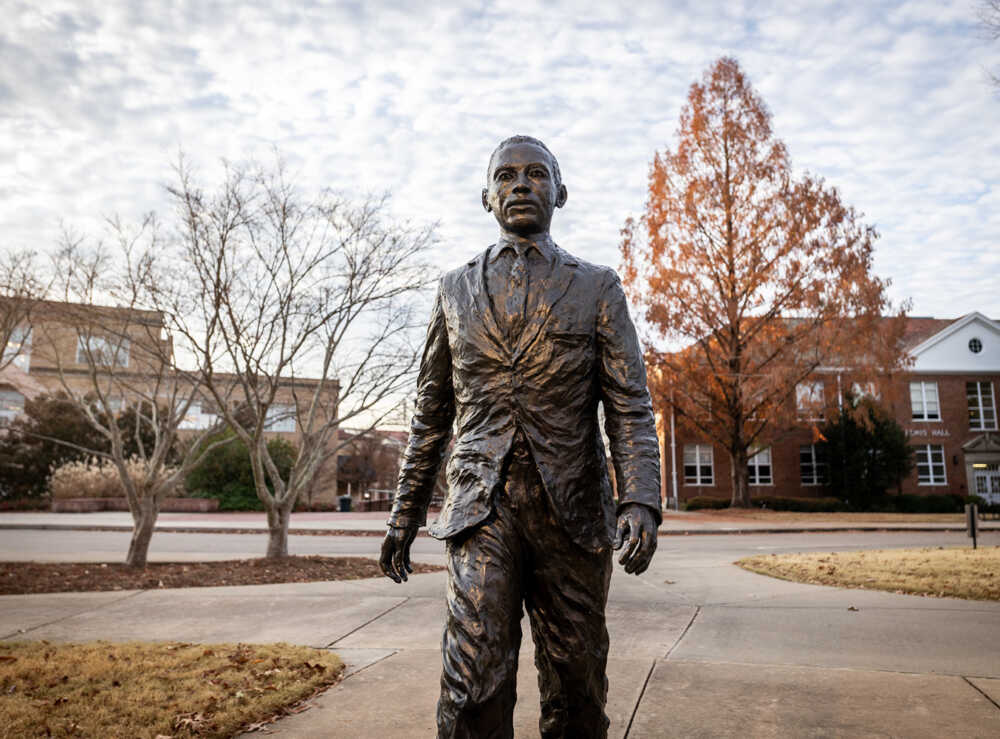
Statewide
Mississippi Freedom Trail
Stops along the Mississippi Freedom Trail make nice breaks as tours travel around the state. The trail numbers nearly 100 historical markers that describe events and people involved in the struggle for civil rights. In Winona, for example, a marker tells of six activists who were arrested, beaten and jailed in 1963 because they attended a voter registration workshop. Another, in Jackson, stands in front of the old Greyhound bus station, no longer in use but highly recognizable with its turquoise trim and Greyhound logo. There, over the summer of 1961, 329 Freedom Riders were arrested for riding segregated buses. They refused bail and were jailed, and their efforts led to the desegregation of public transportation. Many significant sites no longer exist or have new purposes, like the Woolworth’s building in Jackson, now a law office, where three Tougaloo College students held a sit-in at a whites-only lunch counter and endured three hours of harassment by a white mob, including being burned by hot coffee and lit cigarettes.










